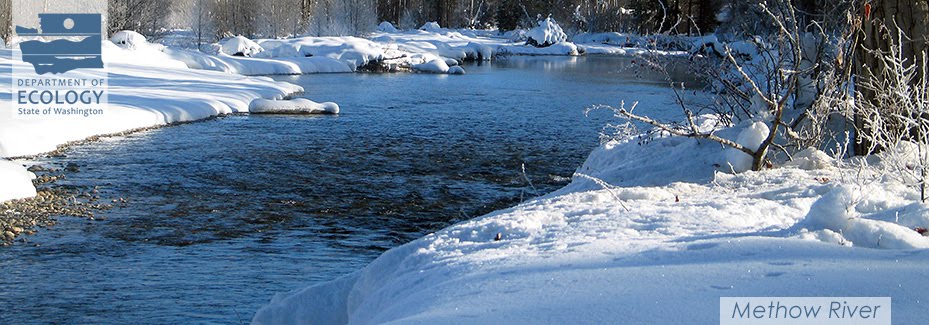By Jessica Payne, Environmental Assessment Program communications manager
 |
| Ecology scientists place trout eggs in Indian Creek to test stream health. Photo by: Ecology |
Scientists from our Environmental Assessment Program
recently worked on a project just like that. They wanted to find out where
pollution might be entering Indian Creek in Olympia. To answer this question, they focused
on the stream's ability to support baby fish and the food they need to survive
and grow. They tested for toxins in the stream water with baby trout.
For the study, they placed trout eggs into the creek at
different test sites and waited to see how they did in the water. If the water
is healthy, the fish should thrive. If it’s polluted with toxins, the fish will
be affected.
Bugs and baby fish
A standard way of testing water quality is by running a chemical analysis through an instrument at a laboratory. However, many toxins can’t be detected by chemical analysis. We don’t have the ability to test for everything that’s
out there, and even for those that we can, there’s limited information
available to tell us how those chemicals will affect aquatic life. What’s more,
chemicals can have a very different effect on wildlife when they’re combined than
when they stand alone.
to test for everything that’s
out there, and even for those that we can, there’s limited information
available to tell us how those chemicals will affect aquatic life. What’s more,
chemicals can have a very different effect on wildlife when they’re combined than
when they stand alone.
“Sometimes, biology is the best way to test the waters.”
said Brandee Era-Miller, our scientist running samples on the creek. “Why?
Animals will respond to any toxin or combination of toxins. We don’t always
have to know what’s in the water to see that it’s not good for fish.”
Aside from fish, our scientists also tested soils, aquatic stream bugs, periphyton (the green slime on rocks), and groundwater that was entering the stream.
Aside from fish, our scientists also tested soils, aquatic stream bugs, periphyton (the green slime on rocks), and groundwater that was entering the stream.
Where, what and how did we test?
We first monitored the stream in 2010. From that study, we knew there was a stormwater pipe carrying runoff from nearby parking lots that may be adding pollutants to the stream. We tested both upstream and downstream from that suspected source to verify if it was indeed a source of toxins. We looked to see if the fish could thrive in the stream. This means more
than just surviving; we also checked to see if they failed to hatch from their eggs,
if they had birth defects or stunted growth.
We looked to see if the fish could thrive in the stream. This means more
than just surviving; we also checked to see if they failed to hatch from their eggs,
if they had birth defects or stunted growth.
Fish are sensitive to different pollutants in each early
stage of their life.
Those life stages include:
- Eggs
- Alevin stage - when they look like a fish but the egg is still attached
- Fry - fully formed, but tiny, baby fish
Our results
What did we find out from this research? Two main things. First, we learned that the test itself was successful; that trout early lifestage testing can be done in streams to directly assess environmental conditions.
Second, results from the tests showed that the creek was a
healthy habitat for fish at the upper site, but impaired at the lower one. What
does this mean? Baby fish were more likely to survive and grow into healthy fry
at the site upstream from the stormwater pipe than the one downstream.
Why this research matters
Not only did we use this method of research to identify sources of pollution for Indian Creek, we also tested a system that is accessible and affordable for all communities. This biological test is an easy and fairly affordable method that local cities, counties and even volunteers could use to test the health of their streams.
Running chemical analysis for every known toxicant in the
stream is very expensive; this gives
communities a way to find out how healthy their streams are without that cost.
Want read details of the study?
You can find
them on our Environmental Assessment Program report summary webpage.
You can also read a detailed review in the city of Olympia’s
STREAM TEAM
spring newsletter.
How you can protect your streams
It’s important for people to know the health of the streams in their neighborhood. It’s even more important for them to know how to protect those streams from toxic chemicals and contaminated stormwater runoff.
You can start by learning what
stormwater is online and taking our stormwater quiz.


No comments:
Post a Comment